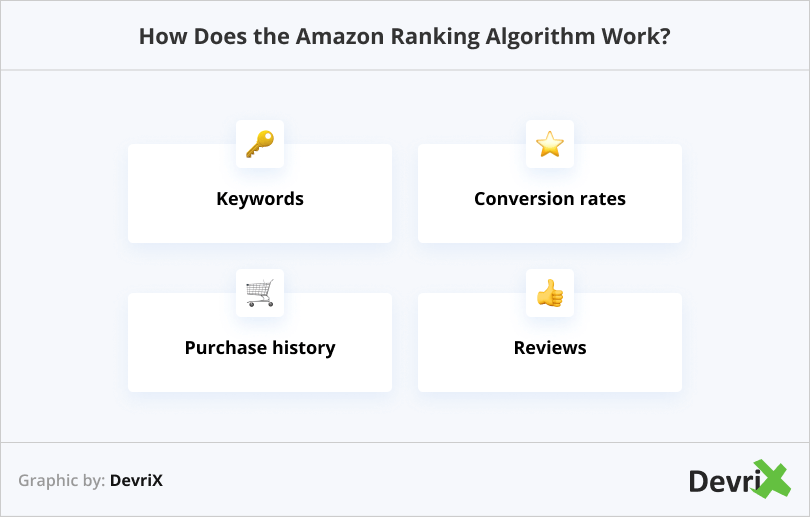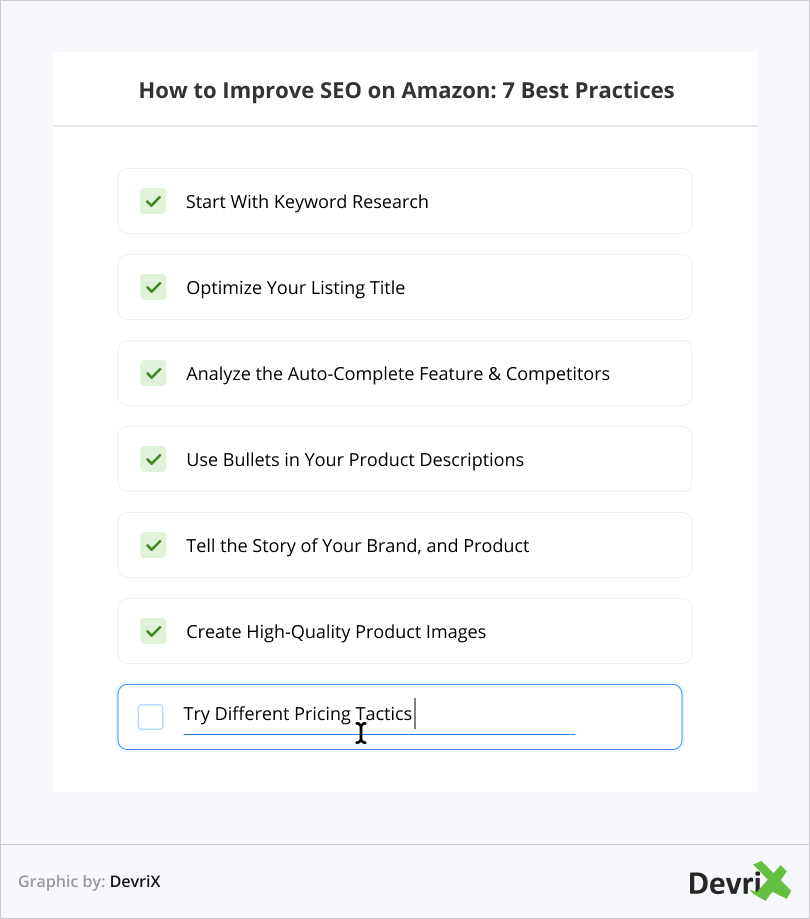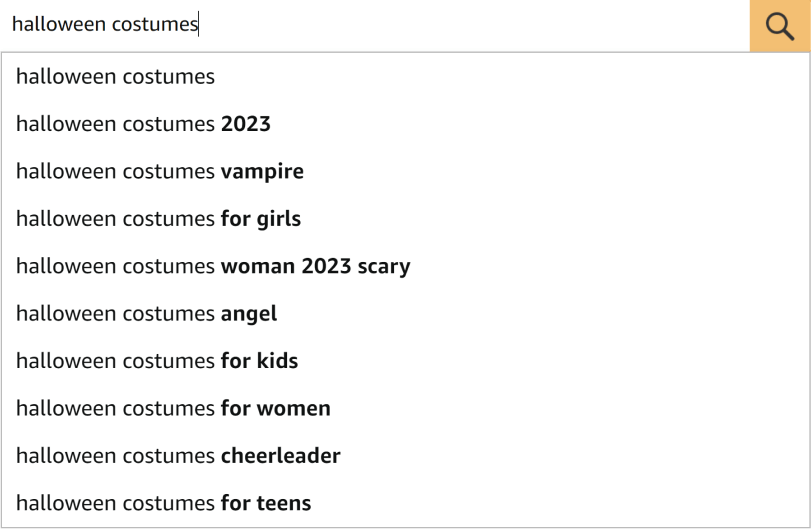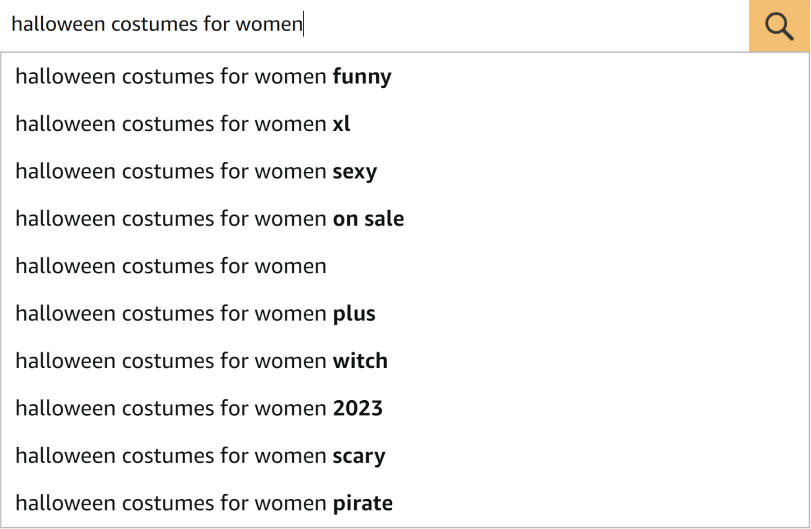Founded in 1994, Amazon has turned into one of the biggest international eCommerce companies. In fact, Amazon is deemed the most valuable brand worldwide in 2023, valued at $299.28 billion.
Amazon is so influential that 63% of online shoppers start their product searches there. However, an outstanding 70% of people never go past the first page of search results.
This fact speaks volumes about the importance of optimizing your product visibility on the platform. That’s exactly why today we are going to talk about Amazon SEO.
Readers Also Enjoy: Setting up Your First PPC Campaign on Amazon – DevriX
What Is Amazon SEO?
Similar to regular search engine optimization, Amazon SEO is actually the process of optimizing your listings, so they achieve higher visibility on the platform, and show up on the first page of search results.
Proper Amazon SEO can have a significant impact on your sales by increasing the traffic towards your listings.
Readers Also Enjoy: Your Go-to On-Page SEO Checklist for 2022 – DevriX
How Does the Amazon Ranking Algorithm Work?

Just like Google SEO, or YouTube SEO, Amazon has its own algorithm that determines the most relevant products for any given search. The Amazon ranking algorithm is called A10. In order to decide which products to place on the first page, the algorithm examines a couple of factors like:
- Keywords. Or the words that are most relevant to the products and/or included in the product description and/or title. They are a great signal to the search engine that this product is relevant for the specific search.
- Conversion rates. Being a marketplace, it’s in Amazon’s own interest to offer products that sell well. Therefore, a product that has a higher conversion rate is more likely to be in the top of a search, compared to a similar product that has a low conversion rate.
- Purchase history. The number of times a product is sold can also help it rank higher. This can also indicate that said product is popular, and the listing is worth showing to customers.
- Reviews. More and more buyers than ever are looking at reviews before deciding whether to buy something. Positive reviews are undoubtedly a factor that can encourage customers to buy a certain product. The more good reviews, the merrier.
Readers Also Enjoy: How to Write a Product Review That Sells? – DevriX
How to Improve SEO on Amazon: 7 Best Practices

- Start With Keyword Research
- Optimize Your Listing Title
- Analyze the Auto-Complete Feature & Competitors
- Use Bullets in Your Product Descriptions
- Tell the Story of Your Brand, and Product
- Create High-Quality Product Images
- Try Different Pricing Tactics
1. Start With Keyword Research
Every search engine’s optimization strategy starts with keyword research, and Amazon is no different. Researching keywords will help you find the best words to use as a way to target your products.
The best approach is to focus on one main keyword to target, plus one secondary keyword. Also, if you are in the beginning of your Amazon adventure, it would be best to go for long-tail keywords.
For example, a good long-tail keyword to choose for flower pots would be “12 inch flower pots for indoor plants”.
Readers Also Enjoy: Keyword Mapping for SEO: The Ultimate Guide – DevriX
2. Optimize Your Listing Title
The title of your Amazon product listing can make or break your chances of getting more visibility. A good title should include:
- The name of your brand
- Product type
- Key features
- Quantity
- Product line
Keep in mind that the product title is one of the main factors in the A10 algorithm. Generally, it is recommended to start your title with either your brand’s name or the main keywords. It is best to experiment until you find what works best for you.
As you can see from this example, when you search for “fake blood”, both types of titles appear – starting with the brand name, and starting with the focus keyword “fake blood”.
Last, but not least, pay attention to what Amazon has set as requirements for the product title:
- Use title case, instead of all caps.
- Keep your titles up to 80 characters long.
- Do not include promotional phrases, like “free shipping”.
- Write 5, instead of five.
- Leave out size and colors from the title.
Readers Also Enjoy: What Is a Title Tag and How to Write One? [Best SEO Practices] – DevriX
3. Analyze the Auto-Complete Feature & Competitors
Similar to how you would use the Google search, you have to take a look at the auto-complete suggestions, analyze them, and decide which ones are the main competitors for the search term.
Auto-complete suggestions will help you with your keyword search, since once you enter your keyword, you will automatically start receiving suggestions, which are also keywords.
Here, we’ve typed “halloween costumes”:
As you can see, we have received suggested searches like, “halloween costumes for women ”, “halloween costumes for kids”, etc.
Then, you can take things one step further by selecting any of these keywords to get even more long-tail keyword suggestions.
Next up, you can analyze the products you want to focus on. Check how they have structured their titles, what keywords they have chosen to use, and so forth.
Readers Also Enjoy: How Does Google Search Work? [Complete Tutorial] – DevriX
4. Use Bullets in Your Product Descriptions
Bullet points are a great way to format content so that it keeps readers interested. You should utilize them in your product descriptions to emphasize the features and benefits of the product.
Here are a few things you should keep in mind:
- Do not include company, shipping or promotional information
- Start every first word with a capital letter
- Spell out measurements (ounces, inches, etc.)
- Write numbers as numerals (one, not 1)
- Do not type hyphens, periods, symbols, and so on
Since Amazon recommends you keep the entire bullet section below 1,000 characters, make sure you are concise, and avoid unnecessary information. Start off each bullet with the benefits of your product, and connect them to their features.
You should also go from the most important product benefits on to the less important ones.
Readers Also Enjoy: SEO Product Description: Your Business Cannot Live Without It – DevriX
5. Tell the Story of Your Brand, and Product
Storytelling is a great way to increase audience engagement. So, when writing your copy, don’t just think about keywords, instead focus on telling the story of your brand and your products.
You see, back in the early days of Amazon, it was completely normal to just have descriptions and titles that were just stuffed with keywords.
Thankfully, things are different now. You have the opportunity to excite people with your story. Make sure to include a powerful call to action at the end of your story, and you should be good to go.
Readers Also Enjoy: How to Master Business Storytelling and Increase Sales – DevriX
6. Create High-Quality Product Images
Naturally, how to improve SEO on Amazon is not dependent solely on text optimization. The images you use also count, and a lot.
Preferably, they should be of the highest quality. Additionally, the Amazon guidelines for images recommend that:
“Images should be 1,000 pixels or larger in either height or width. This minimum size requirement enables the zoom function on the website. Zoom has been proven to enhance sales. The smallest your file can be is 500 pixels on its longest side.”
Readers Also Enjoy: eCommerce Secrets: How to Create Product Images That Sell – DevriX
7. Try Different Pricing Tactics
A lot of people put strong emphasis on the price. Even if you offer the best product around, a heftier price tag than your competitors, might discourage potential buyers. So, if your product is not converting too well, you might want to rethink your pricing strategy.
You need to also consider the fact that Amazon might start displaying your products less often, especially if they are not selling all that well.
Instead, try out different pricing tactics like discounts or setting a lower pricing when you have zero reviews.
Readers Also Enjoy: What Is Captive Product Pricing and Does It Work? – DevriX
Summary
There you have it. Amazon SEO in a nutshell. If you are serious about generating sales on the platform, it’s definitely important and something to keep in mind.
Hopefully, our article has provided you with enough valuable insights about the A10 algorithm, and how to optimize your product listings to achieve greater visibility.





![Small Business SEO Top 7 Benefits [2023]](https://devrix.com/wp-content/uploads/2021/12/Small-Business-SEO_-Top-7-Benefits-2023-380x160.png)

